Car Finder
Automotive, E-Commerce
Reimagining vehicle discovery for early-stage buyers
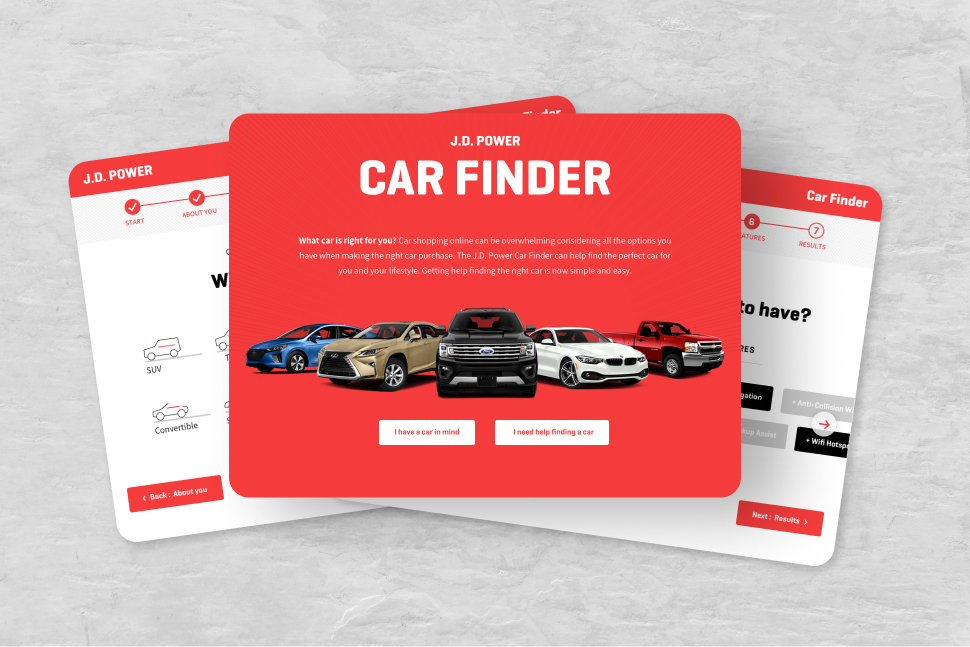
ROLE: UX Research, UX Design, UI Design, Design Leadership
METHODS: Survey, LoFi Wireframe Creation, Prototyping, User Flow Design, HiFi Mockup Design, Task Analysis, Usability Testing, Data Synthesis, Design Pattern Standardization
TOOLS: Adobe Analytics, Onsite Survey, Mural, Balsamiq, Sketch, Validately
TEAM: UX Research & Design teams
Business challenge
Following the acquisition of NADA Guides, J.D. Power faced a strategic challenge: how to effectively combine data assets from two distinct platforms while addressing misalignment between content priorities and actual user needs. Analytics revealed that 85% of visitors were primarily interested in trade-in values, while only 25% were actively shopping for new vehicles. The existing business model focused on new car sales and advertising revenue, creating a significant gap between offering and market demand. Additionally, the company lacked an effective solution for early-stage car buyers who hadn't yet narrowed their vehicle preferences.
My role & leadership
As UX Design Lead, I spearheaded the strategic research initiative that ultimately reshaped the company's digital product strategy. I designed and implemented the large-scale quantitative research that uncovered critical market insights, led cross-functional collaboration between UX Research and Design teams, and advocated for a new product direction with executive stakeholders. I established the vision for Car Finder while overseeing the design process from concept through validation.
Strategic approach
I approached this challenge through a multi-phase strategy:
- Data-driven research: Designed and deployed an in-page survey across 12,000+ users to identify true visitor intent rather than relying on assumptions
- Strategic pivot: Used research findings to justify shifting business focus from advertising revenue to partner offerings and from new car sales to used car valuation
- Market segmentation: Identified the underserved early-stage buyer segment and developed a specialized journey to capture this audience
- Experience simplification: Created a decision framework that reduced cognitive load for undecided buyers while maintaining comprehensive data access
Key decisions & execution
The research revealed a fundamental misalignment between our content strategy and user needs. I made several critical decisions:
- Segment-specific experience: Rather than forcing early-stage buyers through the comprehensive search experience, I advocated for a completely separate discovery path optimized for exploration
- Lifestyle-centered design: Shifted the search paradigm from technical specifications to lifestyle and need-based filtering, making the experience more accessible to non-experts
- Single-page architecture: Designed a streamlined, wizard-like interface that guided users through progressive decision points rather than overwhelming them with options
- Integration strategy: Developed a framework for how Car Finder would integrate with the core valuation experience, enabling smooth transitions as buyers progressed in their journey
Through iterative testing, we identified both positive and negative feedback patterns that informed our final design direction, focusing on maintaining simplicity while providing adequate detail for decision-making.
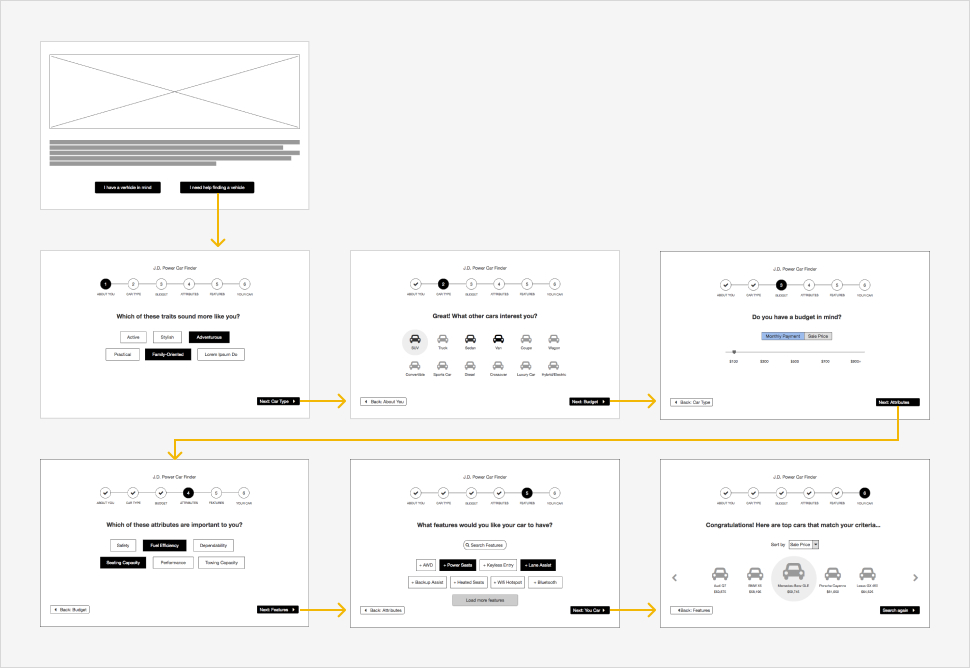
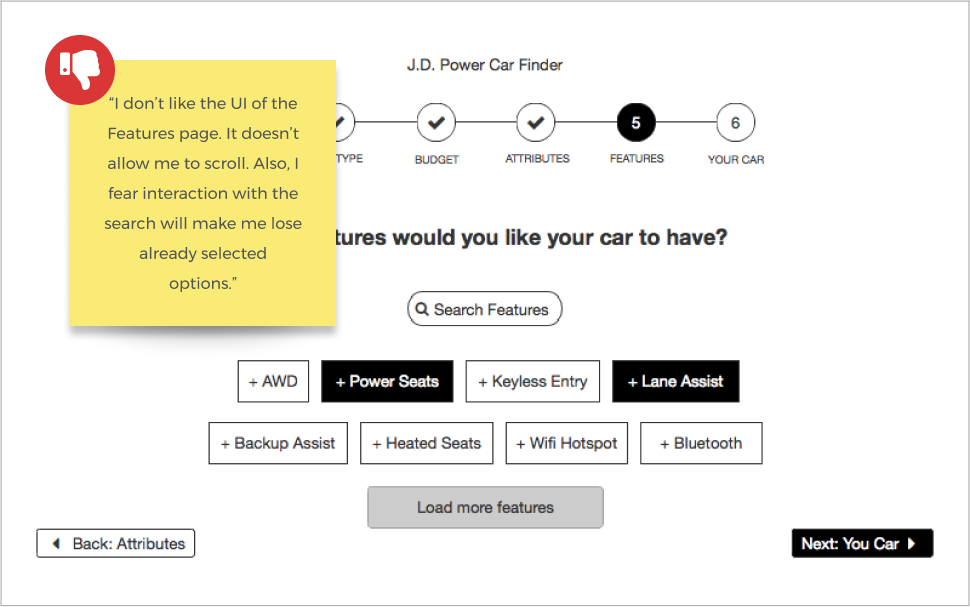
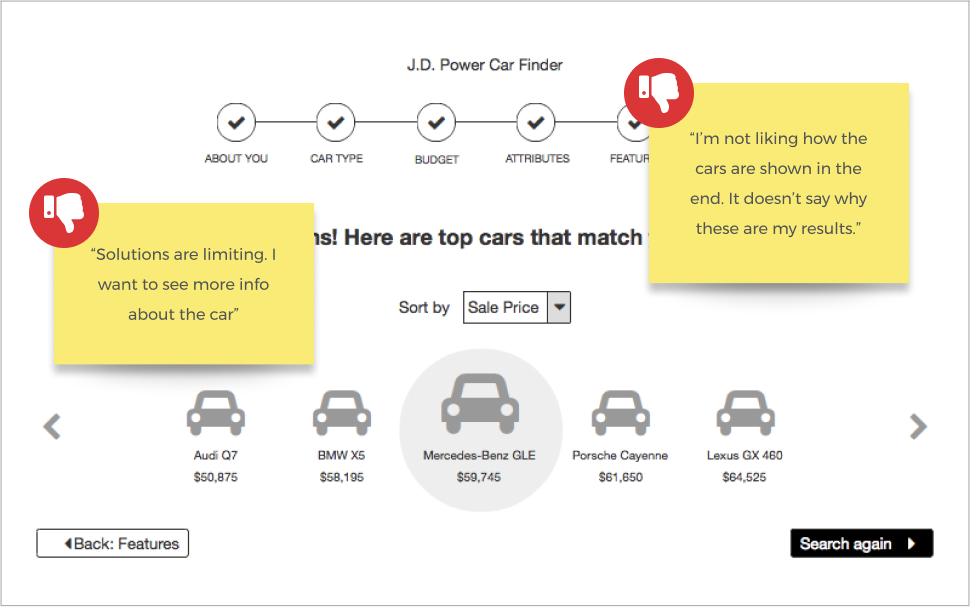


Business impact
The Car Finder initiative delivered significant strategic value:
- Expanded market reach: Created a new entry point for the 75% of visitors not yet ready to purchase, increasing engagement with this previously underserved segment
- Strategic alignment: Provided data-backed justification for shifting company focus toward used car valuation and partner offerings
- User satisfaction: Testing confirmed positive reception to the simplified, lifestyle-based approach among early-stage buyers
- Journey integration: Successfully connected early-stage exploration with the core valuation experience, creating a more comprehensive ecosystem for the car buying journey
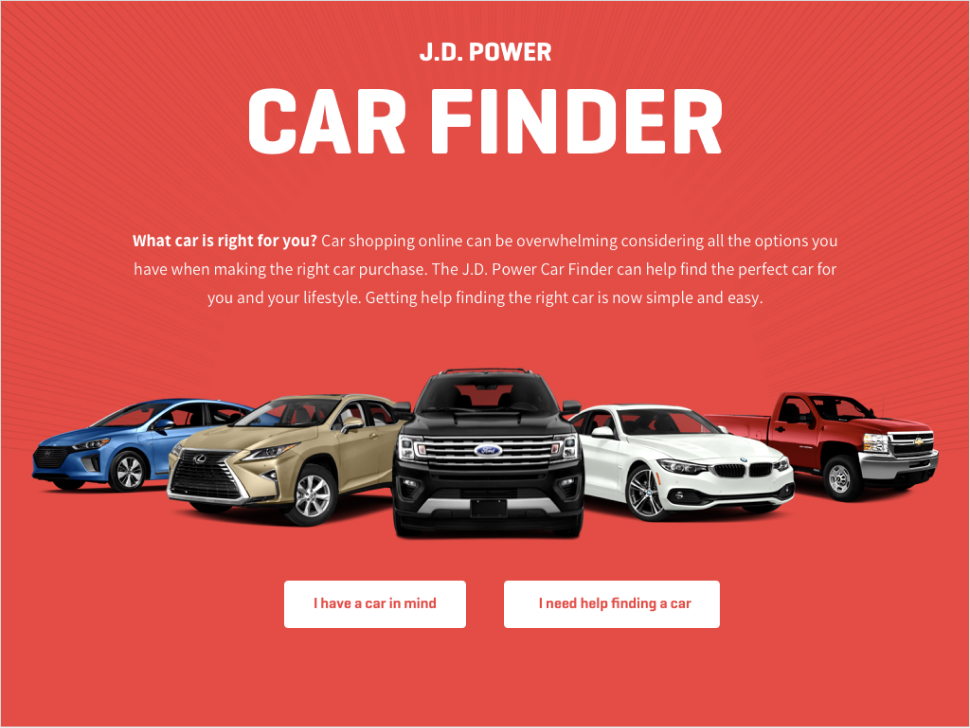

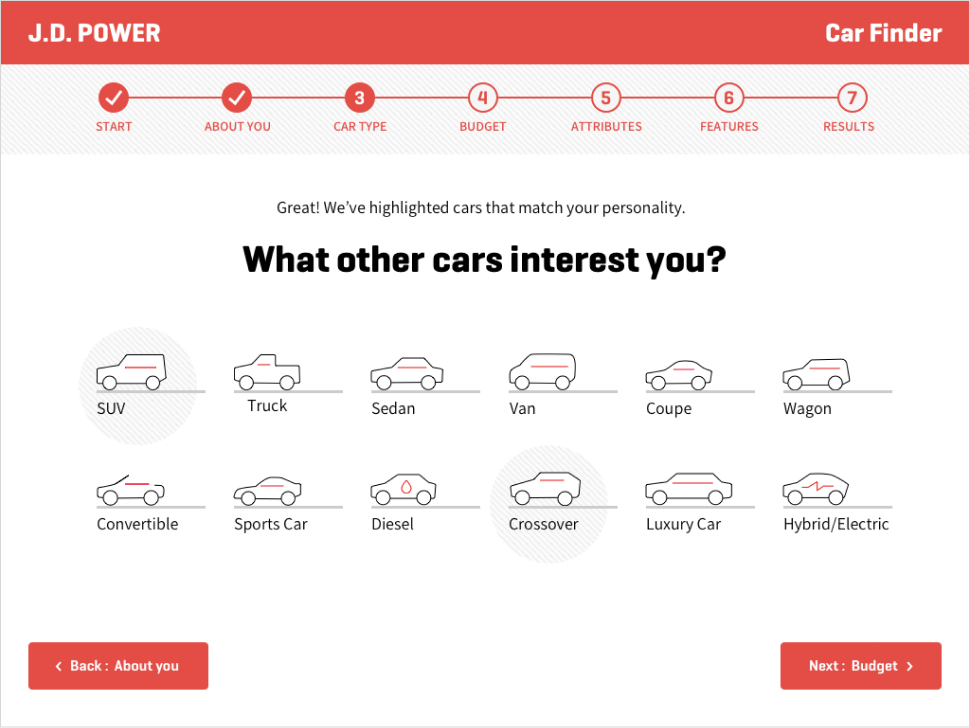

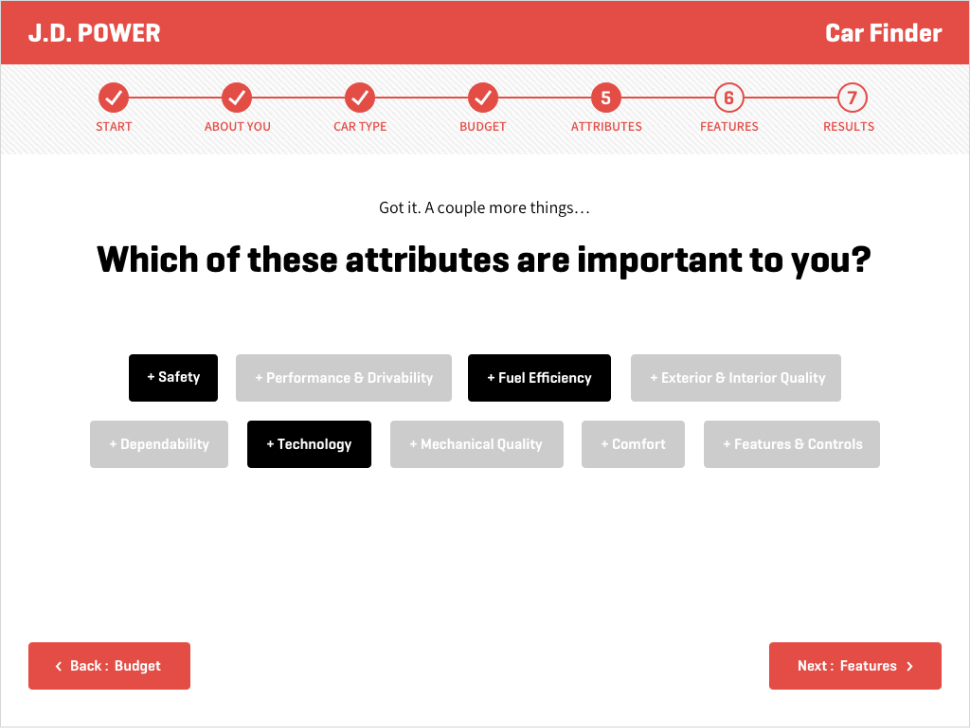
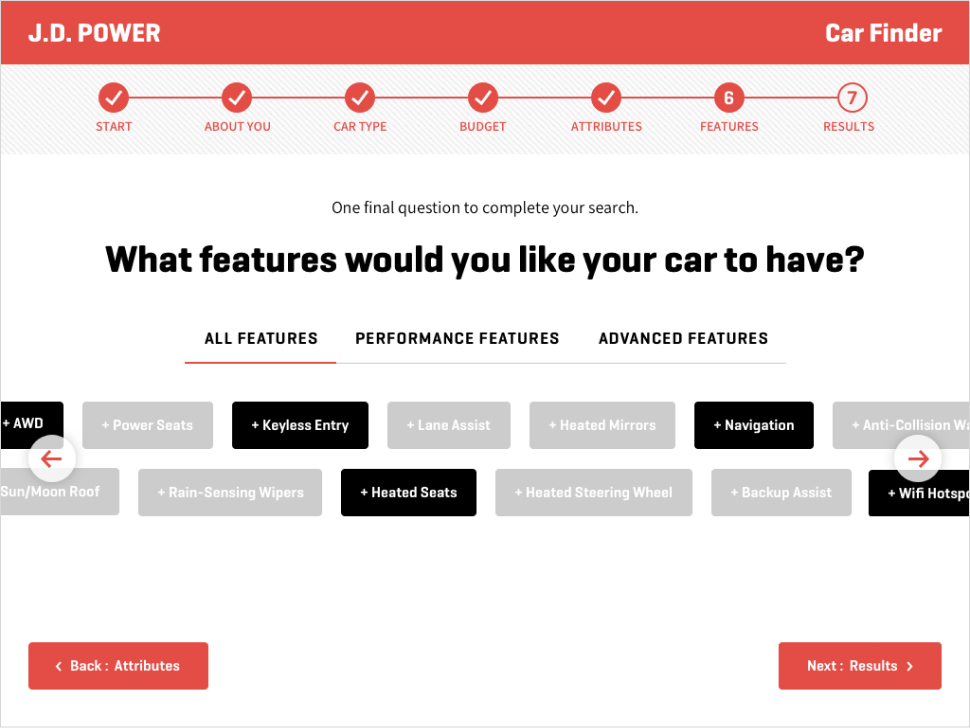
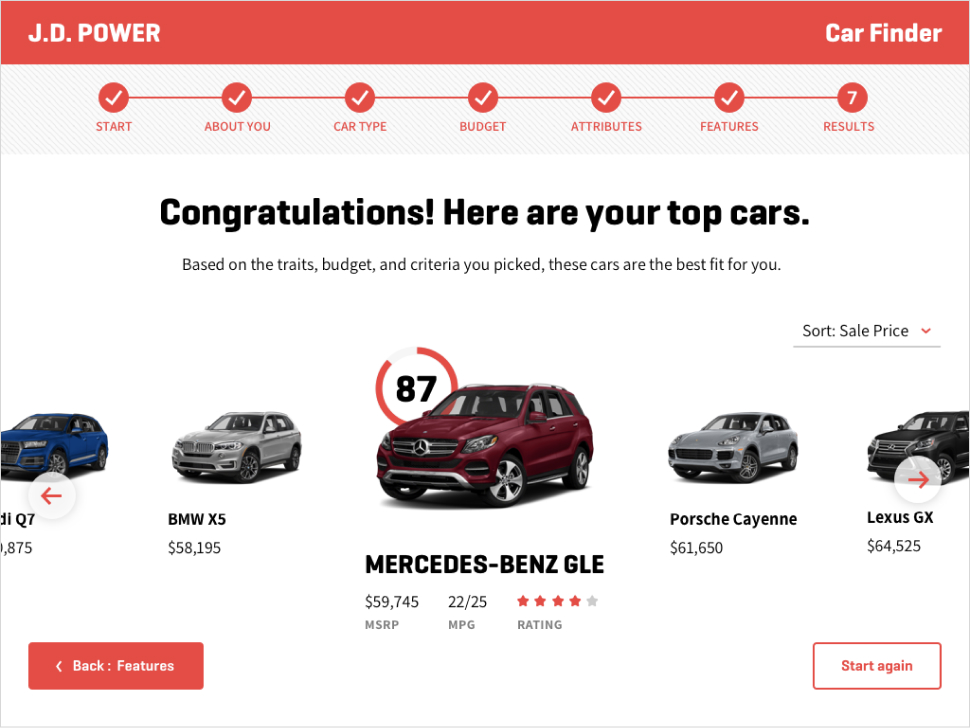
Strategic lessons
This project demonstrated the critical importance of validating market assumptions with robust quantitative data. Despite impressive traffic numbers, our research revealed fundamental misalignments between content strategy and user intent that would have remained hidden without deliberate investigation.I also learned the value of segmentation in digital product strategy—by creating specialized experiences for different user stages rather than a one-size-fits-all approach, we could simultaneously serve the needs of researchers, early-stage explorers, and serious buyers without compromise. This principle has guided my approach to product strategy across subsequent initiatives, focusing on tailored experiences rather than generic solutions.